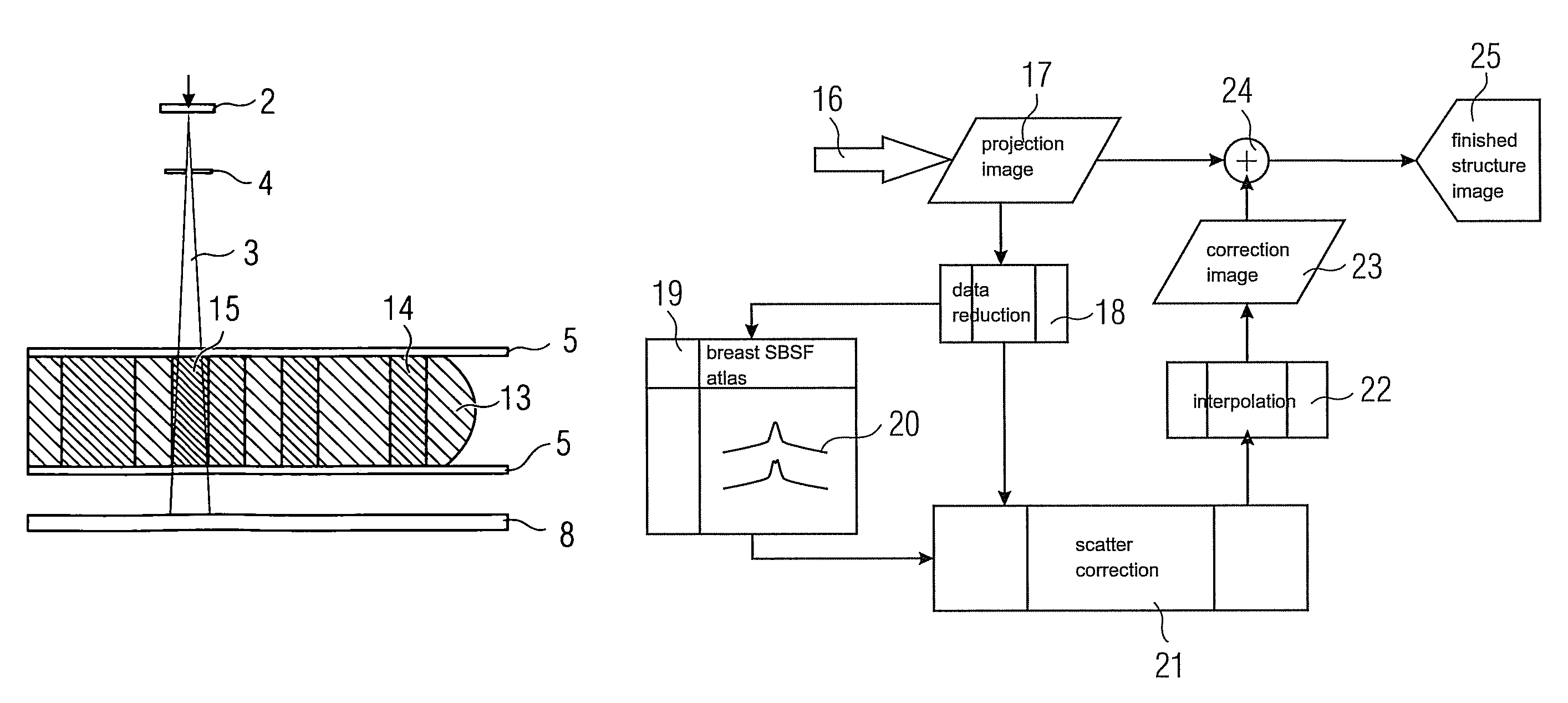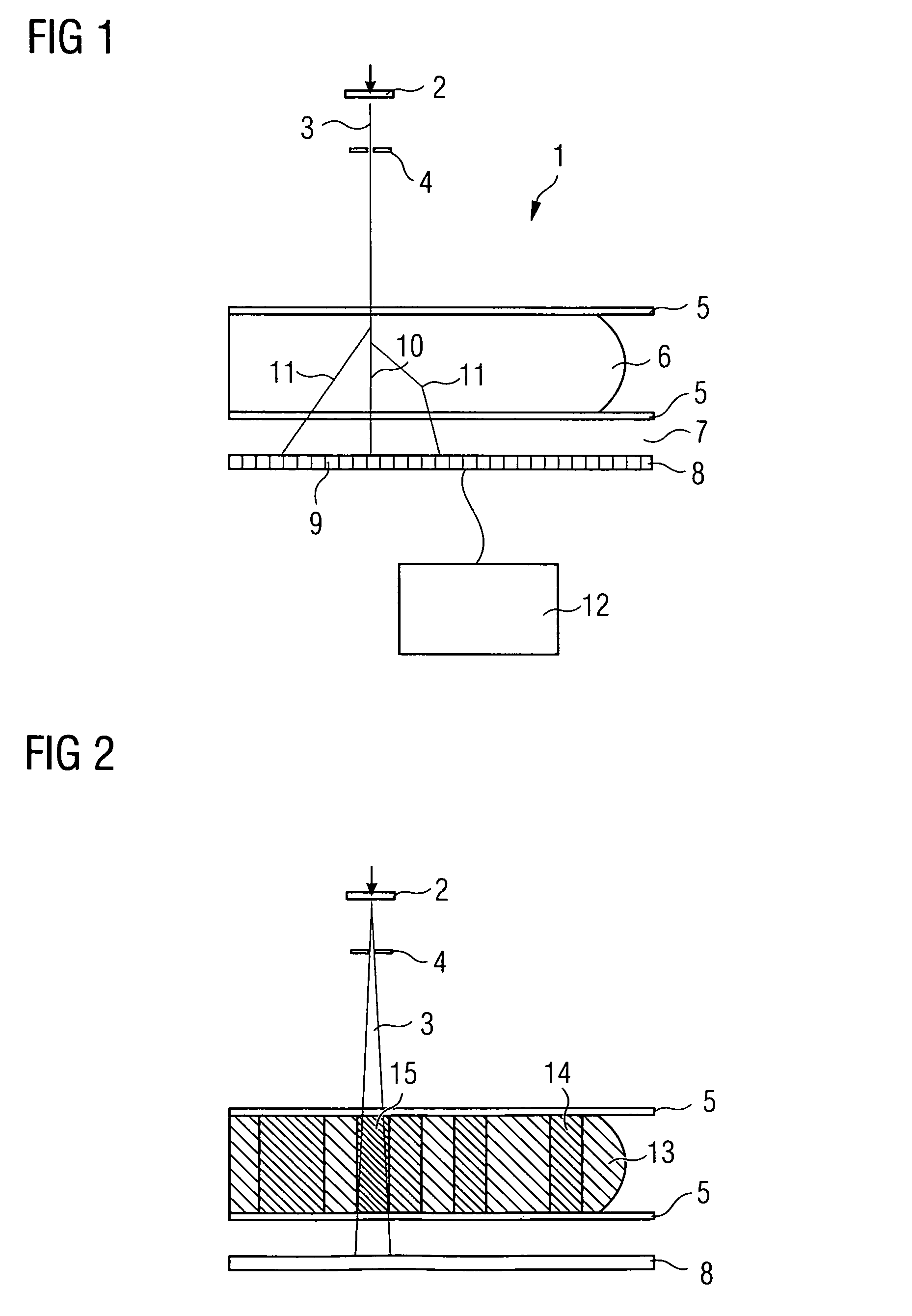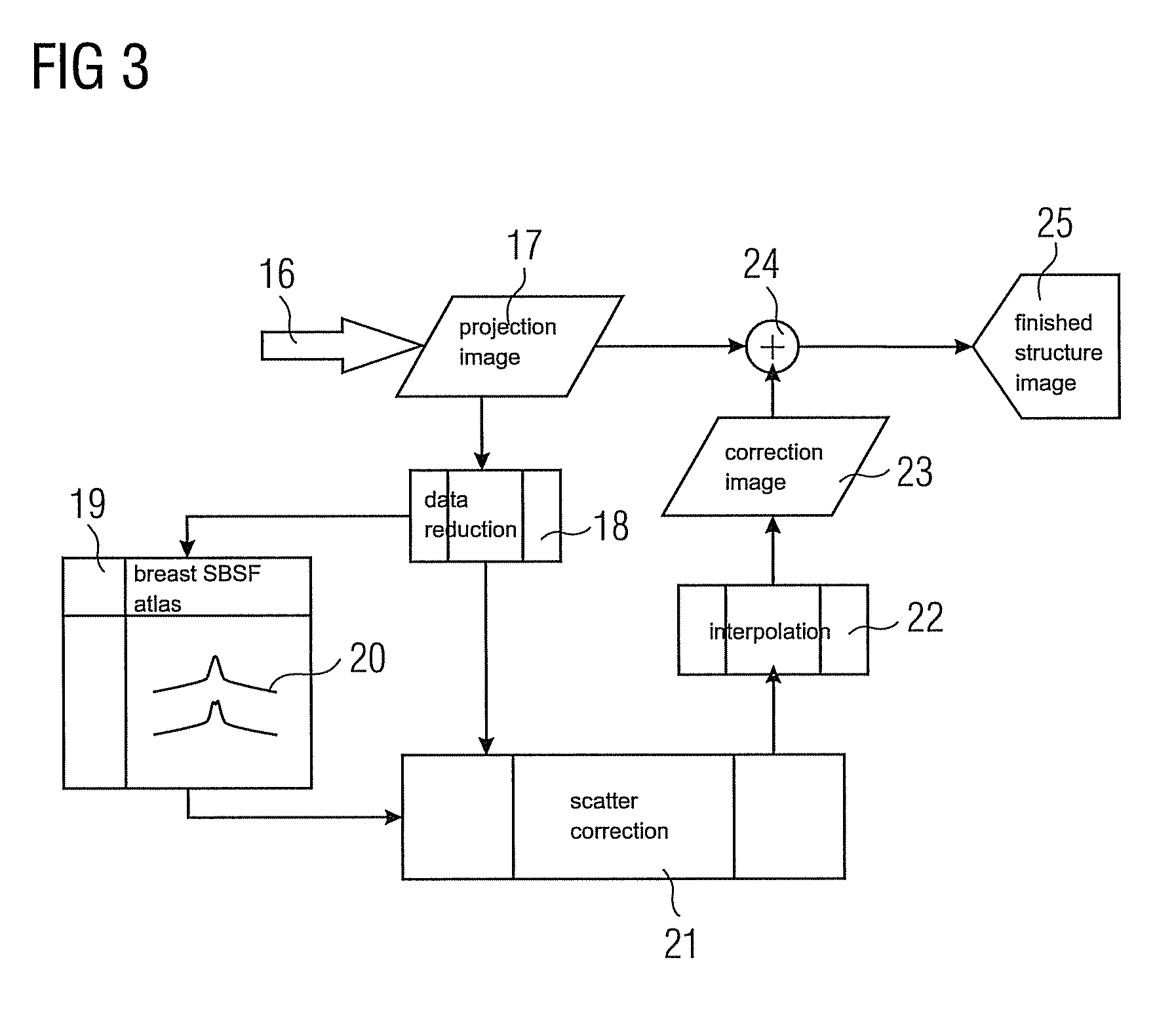Apparatus and method for scatter correction in projection radiography
a projection radiography and apparatus technology, applied in the field of apparatus for projection radiography, can solve the problems of increasing noise, image quality impairment, and inability to use a grid, and achieve the effect of low computational complexity
- Summary
- Abstract
- Description
- Claims
- Application Information
AI Technical Summary
Benefits of technology
Problems solved by technology
Method used
Image
Examples
example 1
[0120]In this example, scatter correction is performed, as described above with equations (#5)-(#9) and (#13)-(#15), using homogeneous location-dependent scatter beam spread functions 20 (=SBSF). For creating said scatter beam spread functions 20 it is assumed by way of simplification that the tissue distribution characterized by the proportion α(j, k) of glandular tissue along the beam leading from the source to the detector pixel continues in a constantly homogeneous manner according to FIG. 4 at right angles to the beam, i.e. parallel to the compression plates 5. It is therefore assumed with respect to the scatter contribution of the beam in the pixel (j, k) that the tissue composition in the lateral neighborhood of the beam does not vary abruptly. Although this is no longer relevant at the edge of the breast, special treatment could be provided there.
[0121]Note, however, that the actual location-dependent inhomogeneity of the tissue composition is allowed for by a specifically d...
example 1a
[0122]In this example 1a the method is essentially performed as in example 1.
[0123]However, the following simplifications are made:
[0124]For each pre-specified layer thickness and the other parameters such as voltage and pre-filtering, a common SBSF 20 is used for all the pixels. In this case the SBSF 20 is therefore selected on a location-independent basis. The selection can be made, for example, by suitable averaging over the tissue compositions present. ΔS in equation (#7) and (#9) then becomes independent of the pixel index (j, k); the double index (j, k) can—similarly as in equations (#16a) to (#16c)—be omitted.
[0125]The important feature is that the integral in equation (#9) becomes a genuine convolution which can be efficiently executed by FFT (=Fast Fourier Transformation).
example 1b
[0126]In this example 1b the method is likewise performed essentially as in example 1.
[0127]In this case, however, a uniform convolution kernel (for all the layer thicknesses) is used for the scatter calculation. The fact that for a small layer thickness relatively less scatter is produced than for a large layer thickness must be taken into account by means of scaling factors which are a function of the layer thickness and other parameters such as voltage and filtering.
[0128]Approximately the same computational complexity is necessary for example 1b as for example 1a. On the other hand, much less memory space is required for storing the breast SBSF atlas 19 in this example.
PUM
| Property | Measurement | Unit |
|---|---|---|
| compression thicknesses | aaaaa | aaaaa |
| density | aaaaa | aaaaa |
| thickness | aaaaa | aaaaa |
Abstract
Description
Claims
Application Information
 Login to View More
Login to View More - R&D
- Intellectual Property
- Life Sciences
- Materials
- Tech Scout
- Unparalleled Data Quality
- Higher Quality Content
- 60% Fewer Hallucinations
Browse by: Latest US Patents, China's latest patents, Technical Efficacy Thesaurus, Application Domain, Technology Topic, Popular Technical Reports.
© 2025 PatSnap. All rights reserved.Legal|Privacy policy|Modern Slavery Act Transparency Statement|Sitemap|About US| Contact US: help@patsnap.com



